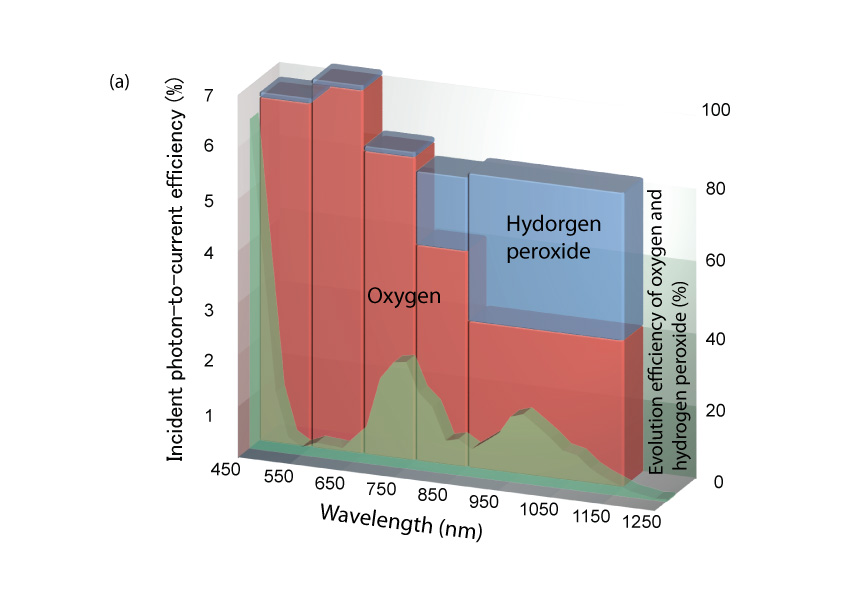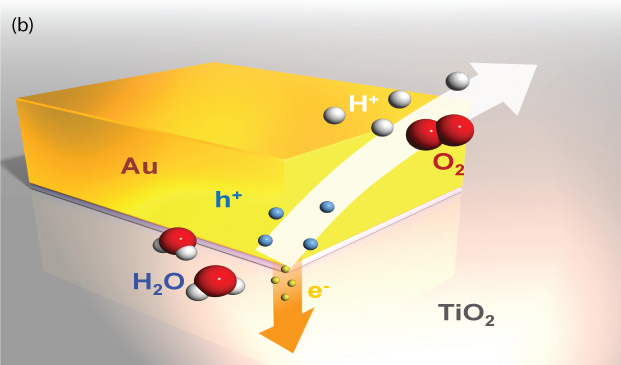The first ever successful water oxidation with a near-infrared light irradiation
Research Press Release | September 17, 2013
-
 (a) This shows the wavelength dependence of IPCE (incident photon-to-current efficiency), and the wavelength dependence of evolution efficiency of oxygen and hydrogen peroxide for the photocurrent (bar graph).
(a) This shows the wavelength dependence of IPCE (incident photon-to-current efficiency), and the wavelength dependence of evolution efficiency of oxygen and hydrogen peroxide for the photocurrent (bar graph). -
 (b) A schematic illustration of the evolution of oxygen due to the water oxidation caused by the plasmon-induced charge separation based on the electron transfer from gold nanostructure to the conduction band of titanium dioxide).
(b) A schematic illustration of the evolution of oxygen due to the water oxidation caused by the plasmon-induced charge separation based on the electron transfer from gold nanostructure to the conduction band of titanium dioxide).
| Press Release | ||
|---|---|---|
| Key Points |
– The first ever successful water oxidation with a near-infrared light irradiation achieved by light harvesting induced at gold nanostructured optical antennae. – Expected developments in artificial photosynthesis using visible light and near-infrared light. |
|
| Overview | Professor Hiroaki Misawa’s research group at the Hokkaido University Research Institute for Electronic Science successfully fabricated gold nanostructures/titanium dioxide photoelectrodes capable of the photoelectric conversion of a wide spectral range, namely the ultraviolet, visible light, and near-infrared wavelengths, and made progress toward artificial photosynthesis systems, which are gaining attention, not only for photoelectric conversion but also for the ultimate light-energy conversion system.
As a result, with regard to the water oxidation crucial in artificial photosynthesis systems, the research group succeeded in creating the world’s first system that involves oxygen and hydrogen peroxide using not just visible light but also near-infrared light. |
|
| Inquiries |
Hiroaki Misawa, Professor, Research Institute for Electronic Science, Hokkaido University TEL:+81-11-706-9358 FAX:+81-11-706-9359 e-mail: misawa@es.hokudai.ac.jp |
|
| Japanese Link | http://www.hokudai.ac.jp/news/130906_pr_es.pdf | |
| Publications | NPG Asia Materials, (9.6.2013) | |
